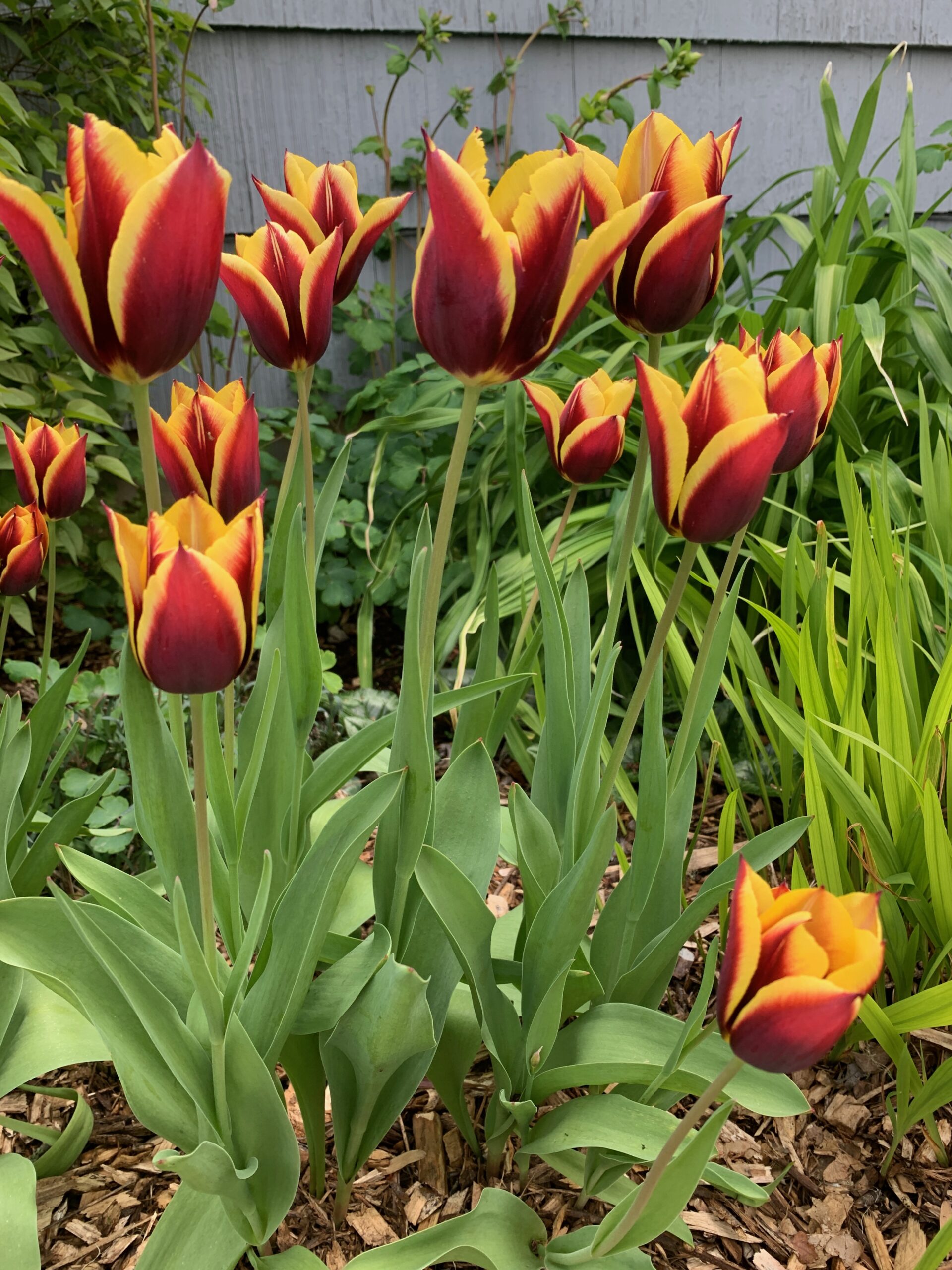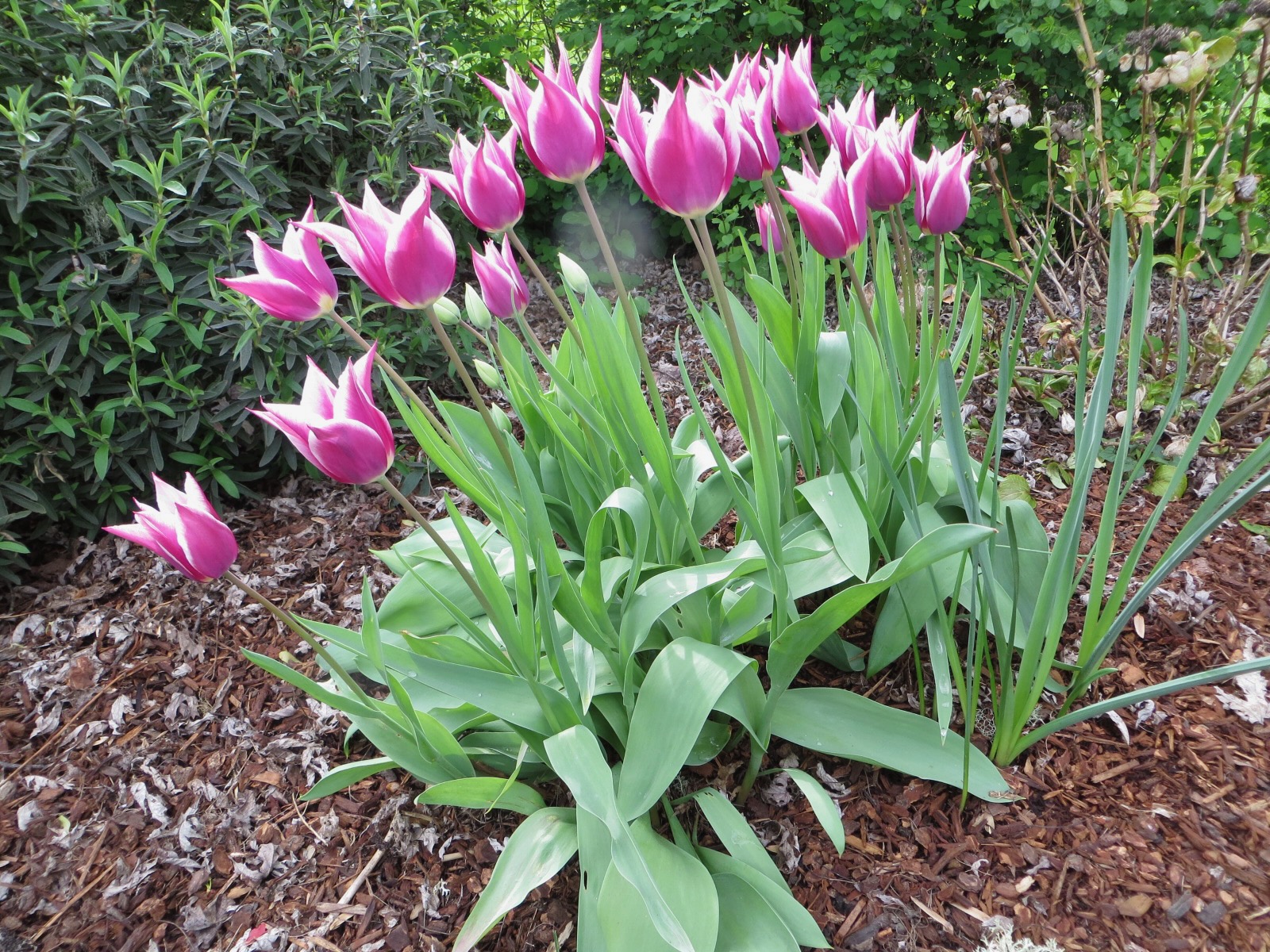Spring Bulbs by Bonnie Courter as published in the News-Review September 20, 2024
Question: When is the best time to plant spring-blooming bulbs?




Answer: September is prime time to plant spring-blooming bulbs, giving the bulbs time to establish their root system before frost arrives. And whether you plant them in the ground or in containers, here are some general tips to create that eye-popping color that will definitely lift your spirits next spring after the bleak winter.
Purchase bulbs this month for best selection and variety. To ensure a long-lasting show in the spring, plan on a variety of bulbs. In general, the early bloomers are crocus, snowdrops, species tulips and dwarf iris. Next are grape hyacinths, tulips, daffodils, and common hyacinths. Bulbs that bloom in late spring to early summer include alliums, bearded iris and Dutch iris. By careful planning, you can have an outstanding bloom display lasting from early March through early June.
When purchasing bulbs, avoid those that show evidence of mold, disease or mechanical damage. Select the largest bulbs of a variety since there’s a direct correlation between bulb and flower size.
Choose a location for planting with good drainage to reduce the risk of rot, and where they will show their flowers off to their best advantage. Bulbs do well in both sun and shade. Also consider that a solid block of one color is more impressive from a distance than a mixture of colors and varieties. Tuck them into little spots in flower beds, around trees or even in rock gardens.
Prepare the soil by adding compost and organic matter and fluffing up the soil to add aeration. Apply phosphorus fertilizer at the base of the bulb hole at planting time so it is available to the roots. Plant the bulbs at a depth consistent with the planting depth chart usually found on the packaging. The general rule of thumb is plant four times the height of the bulb between the soil surface and the tip of the bulb, making sure that you plant the bulbs with the growing tip up. Cover the bulbs with soil then add 3” of mulch on top. The mulch insulates and conserves moisture as well as prevents excessive weed growth. After planting, water the bulbs in well to help with rooting, but avoid overwatering.
After the plants bloom in the spring, it’s important to let the foliage die back naturally. I know this may look unsightly, but the foliage is used by the bulb to provide energy through photosynthesis for next season’s bloom. Consider planting annuals or tall groundcovers near the bulbs to hide the fading foliage.
Many bulbs spread naturally over the years. If the bulbs begin to become too crowded after the second or third year, they might start to lose much of their original vigor, resulting in smaller blooms. When this happens, dig up the bulbs in late August and allow them to dry for a few days in a shady, cool spot. Then go ahead and divide them, replanting only the best ones in a new location. If none of the bulbs are as large as the original ones, it’s time to purchase new ones for better results.
If you’re short on space, you can absolutely grow spring bulbs in containers. The advantages are many, including being able to move them about on a deck or porch, and enjoying the fragrance and beauty of the flowers up close. However, you can’t grow bulbs in containers the same way as in the ground. Since pots only provide limited space in an artificial environment, the wrong potting soil, extreme temperatures or a couple of days without water can effect success drastically. So here’s some tips on growing bulbs in containers:
- Use regular potting soil, not soil from the garden.
- Plant bulbs shallowly and close together without touching, making sure the pot has a drainagehole in the bottom. In smaller containers, plant the bulbs with their tips just below the soil surface to leave more room under them for root growth. Tulip bulbs should be arranged with their flat side facing outward.
- Keep them over winter in a cold place like a garage or basement that doesn’t go below freezing.
- Avoid combining different types of bulbs in one pot as rooting and blooming times vary so much for different bulbs that the results are often disappointing.
- Keep soil moist, but not soggy. Use your finger to check soil moisture at least weekly through the winter.
- When foliage starts to show, move the pot into brighter light and eventually full sun, then step back and enjoy the show!

